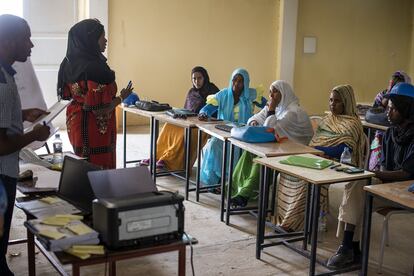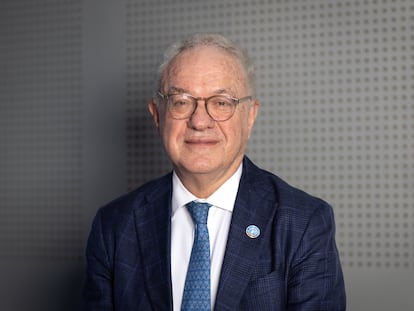Microfinance: salvation or a trap for the world’s poorest?
This global industry has been the first to demonstrate it can successfully boost the fortunes of the underprivileged, but is it actually efficient?

Microfinance — or small scale financial services for the underprivileged — was hailed in the 1980s as the magic wand which would end poverty once and for all. Its pinnacle of recognition came in 2006 with the award of the Nobel Peace Prize to Mohammad Yunus, one of its masterminds and principal champions.
But the glory did not last long, and 10 years later, there was a tsunami of criticism alleging it put clients into too much debt, as well as meting out measures that were too harsh to defaulters. Microfinance programs were blamed, for example, for the suicides of 80 women in the Indian region of Andhra Pradesh in 2010.
Over the years, microfinance has become a sizeable global industry, the first to demonstrate that it can successfully address the needs of the most disadvantaged. It is estimated to have given more than $180 billion (€165 billion) in credit and to have served around 200 million people. However, the debate persists over how beneficial microfinance really is for its clients.
Proving microfinance is working is no easy task. Esther Duflo, a renowned Nobel laureate in economics, conducted randomized control group trials (RCTs) in 2010 without drawing a clear conclusion. The RCT approach does not document the factors and dynamics that produce the outcome, hence, the only conclusion was that the impact of these financial services depends on the context and on those involved.
Defining cause-effect in the microfinance market is hard as there are many factors that influence the improvement of clients’ lives. Moreover, the impact is not evident in the short term. As I tell my Master’s students, if we were all given a microcredit to improve our lives, would we all have the same success?
According to 70% of clients, microcredit generates greater financial resilience. For 75% of clients, repayment is not a problem. Only 6% indicate that paying back the debt has proved a burden.
What is clear is that using a formal financial credit system as opposed to an informal one has advantages, not only in terms of access and cost, but also in terms of client protection and the regulation of financial practices.
Given the amount of funds allocated to finance microfinance, would it not be better to ask clients if and how it has changed their lives? This is what the report from 60 Decibels, a company set up by Acumen Fund, has just done, and its conclusions are compelling. Eighty nine percent of clients say that their quality of life has improved thanks to microfinance. Based on interviews with more than 32,000 clients in 32 countries, the index has compiled more than one million pieces of data. The survey covers more than 84 million microfinance clients, or about 40% of the global total.
The time factor is key to experiencing an improved quality of life. Clients who have been with their financial service provider longer are more likely to “strongly agree” that their lives and domestic situation have improved. Some 22% of the longest-serving clients reported a significant rise in spending on home improvements and quality meals, as well as spending more on their children’s education. These results are also highlighted by the BBVA Microfinance Foundation reports on social performance.
Clients who have accessed additional services from their financial service provider beyond credit also report substantial improvements in quality of life, business income, ability to manage their finances, savings and confidence. Two-thirds of the microfinance institutions interviewed currently offer financial and non-financial services to clients in addition to credit.
According to 70% of clients, microcredit generates greater financial resilience. For 75% of clients, repayment is not a problem. Only 6% indicate that paying back the debt has proved a burden. Clients are more likely to report that their household food consumption has been reduced and their financial concerns increased.
The impact on women’s lives is also significant. Eighty-three percent of women report improvements in their confidence because of their relationship with their financial service provider, and 67% report better financial decision making. Improvements reported by women are marginally greater than those reported by men.
Clients are clear about the role of microfinance in mitigating the risk of relapse into poverty and in coping with contingencies, as well as being empowering for poorer women.
Wouldn’t it be better to stop theorizing about the impact of microfinance and concentrate on developing and implementing better regulation and protection for customers, especially when it comes to developing products that really meet unique individual needs and are able to boost the impact on lives?
As I wrote in an article on the Huruma Fund, the key lies in being able to offer microfinance products specific to the needs of particular sectors, such as the smallholder farmers who feed the world. We have a lot of work to do in this regard. It is the only way to improve the impact on microfinance’s most vulnerable clients.
Sign up for our weekly newsletter to get more English-language news coverage from EL PAÍS USA Edition
Tu suscripción se está usando en otro dispositivo
¿Quieres añadir otro usuario a tu suscripción?
Si continúas leyendo en este dispositivo, no se podrá leer en el otro.
FlechaTu suscripción se está usando en otro dispositivo y solo puedes acceder a EL PAÍS desde un dispositivo a la vez.
Si quieres compartir tu cuenta, cambia tu suscripción a la modalidad Premium, así podrás añadir otro usuario. Cada uno accederá con su propia cuenta de email, lo que os permitirá personalizar vuestra experiencia en EL PAÍS.
¿Tienes una suscripción de empresa? Accede aquí para contratar más cuentas.
En el caso de no saber quién está usando tu cuenta, te recomendamos cambiar tu contraseña aquí.
Si decides continuar compartiendo tu cuenta, este mensaje se mostrará en tu dispositivo y en el de la otra persona que está usando tu cuenta de forma indefinida, afectando a tu experiencia de lectura. Puedes consultar aquí los términos y condiciones de la suscripción digital.
More information











































